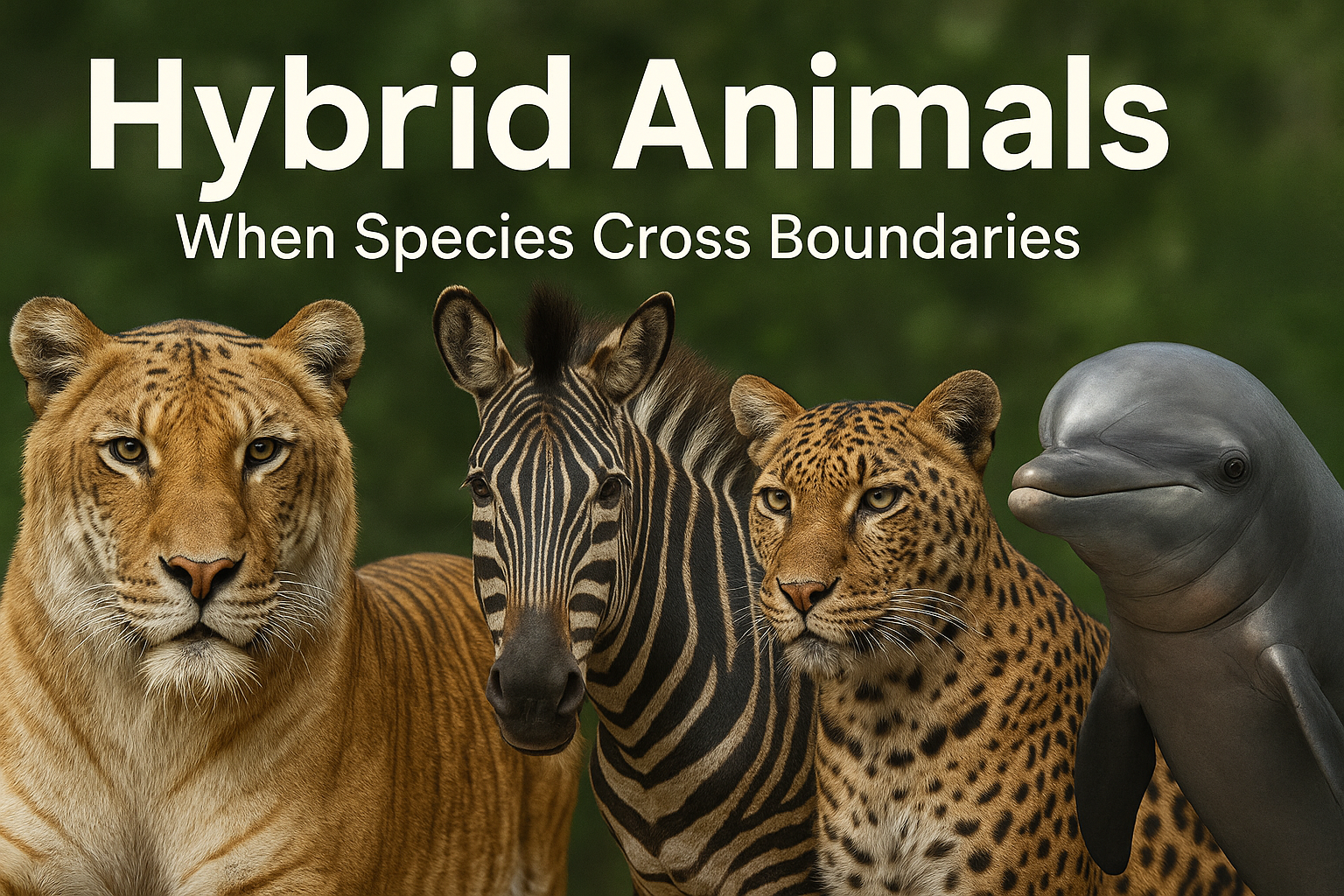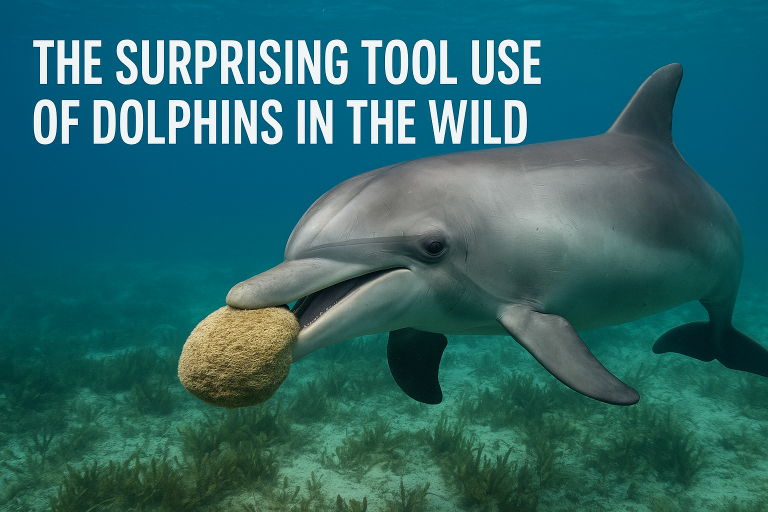In the wild, the boundaries between species are not always as rigid as we think. When different but closely related species mate, they can produce hybrid animals—unique offspring that blend traits from both parents. From the majestic liger (lion + tiger) to the mysterious wholphin (whale + dolphin), hybrids challenge our understanding of species classification and evolution.
This article explores the science behind hybridization, the most fascinating hybrid animals, and what these rare creatures reveal about genetics, conservation, and the fluidity of life.
1. What Is a Hybrid Animal?
A hybrid animal results from the crossbreeding of two distinct species, usually within the same genus. While rare in nature, hybridization can occur naturally or through human intervention.
Key Characteristics of Hybrids:
-
Genetic Mix: They inherit DNA from both parent species.
-
Fertility Varies: Some hybrids (like mules) are sterile, while others (like coyote-wolf hybrids) can reproduce.
-
Intermediate Traits: Hybrids often display a blend of physical and behavioral features from both parents.
A 2023 study in Science found that hybridization is more common than previously thought, with over 10% of animal species capable of interbreeding.
2. The Most Fascinating Hybrid Animals
A. Liger (Lion + Tiger)
-
Size: The largest big cat, weighing up to 900 lbs.
-
Behavior: More social like lions but enjoys swimming like tigers.
-
Controversy: Only exists in captivity due to geographic separation of parents in the wild.
B. Wholphin (False Killer Whale + Dolphin)
-
Rarity: Only a few confirmed cases exist.
-
Appearance: A blend of dolphin sleekness and whale bulk.
-
Discovery: First documented at SeaLife Park Hawaii in 1985.
C. Zorse (Zebra + Horse)
-
Stripes: Bold zebra patterning on a horse-like body.
-
Temperament: More aggressive than horses, retaining zebra instincts.
D. Grolar Bear (Grizzly + Polar Bear)
-
Climate Change Link: Increasing sightings as Arctic habitats overlap.
-
Adaptations: Thinner fur than polar bears but stronger claws than grizzlies.
3. How Does Hybridization Happen?
Natural Hybridization
-
Overlapping Habitats: Climate change or migration brings species together.
-
Mate Scarcity: When no purebred mates are available.
Human-Induced Hybridization
-
Captive Breeding: Zoos and private breeders experiment with crosses.
-
Habitat Destruction: Forces species into new territories.
Genetic Compatibility
-
Closely related species (same genus) hybridize most easily.
-
Chromosome count must be similar for viable offspring.
4. The Evolutionary Impact of Hybrids
Positive Effects
-
Increased Genetic Diversity: Can strengthen populations.
-
New Adaptations: Hybrids may survive better in changing environments.
Negative Effects
-
Species Dilution: Rare purebred genes may disappear.
-
Ecological Imbalance: Hybrids may outcompete parent species.
A 2022 Nature study warned that climate-driven hybridization could threaten endangered species like polar bears.
5. Controversies & Ethical Concerns
Captive Breeding Debates
-
Pros: Educational value, genetic research.
-
Cons: Health issues (many hybrids have birth defects).
Conservation Dilemmas
-
Should we prevent grolar bears to protect pure polar bears?
-
Can hybrid vigor save declining species?
6. The Future of Hybrid Animals
Climate Change Will Increase Hybridization
-
More species ranges will overlap.
-
New hybrid super-adaptors may emerge.
Genetic Engineering Possibilities
-
CRISPR could create “designer hybrids” for conservation.
-
De-extinction projects may revive hybrids of extinct species.
Conclusion: Nature’s Boundary-Blurring Wonders
Hybrid animals prove that evolution doesn’t always follow strict rules. As habitats change, these genetic mashups may become crucial for survival—forcing us to rethink what defines a species.
Whether marvels or mistakes, hybrids remind us that life always finds a way.




Leave a Comment